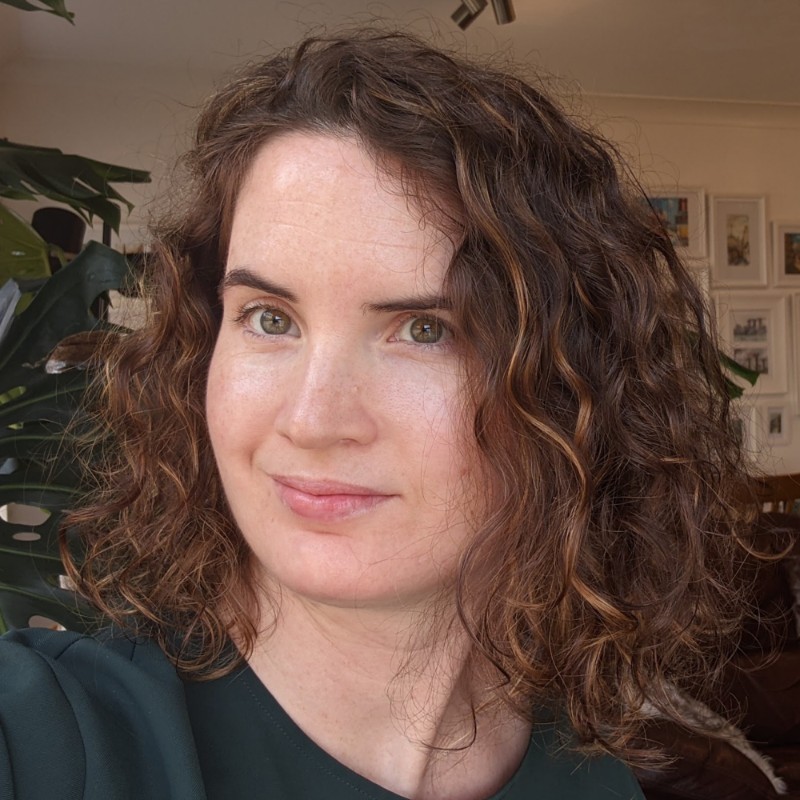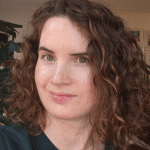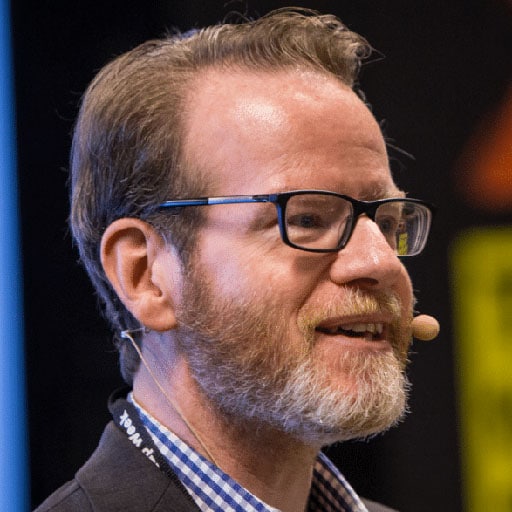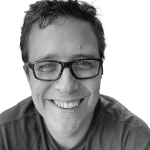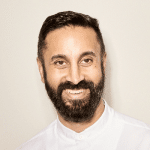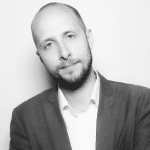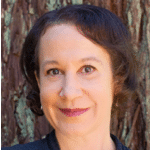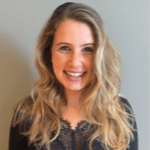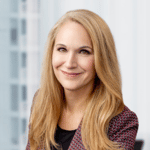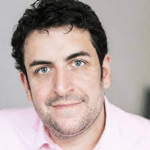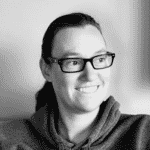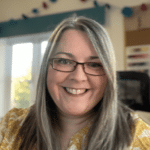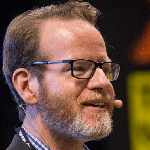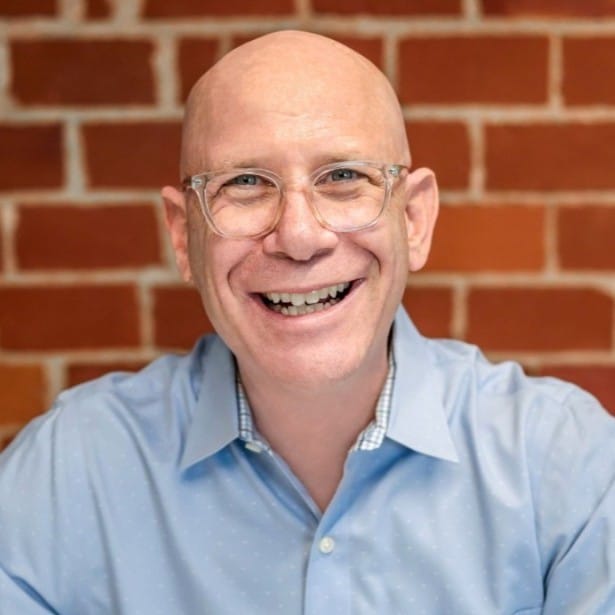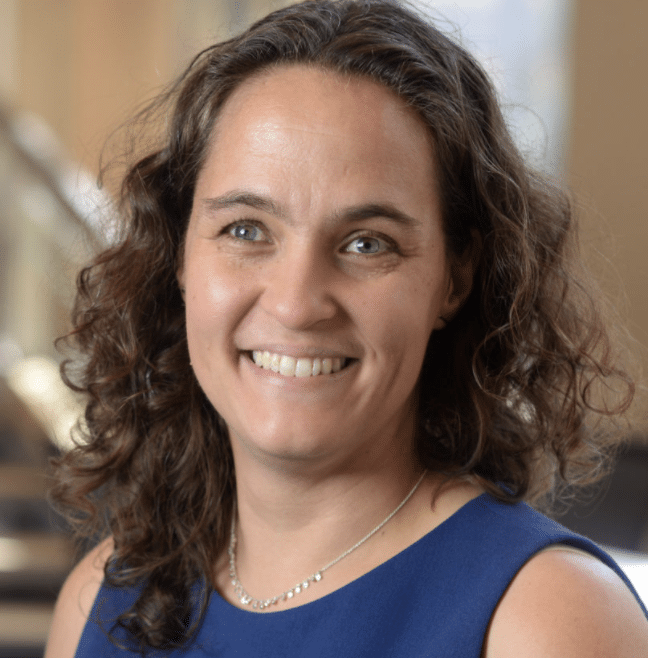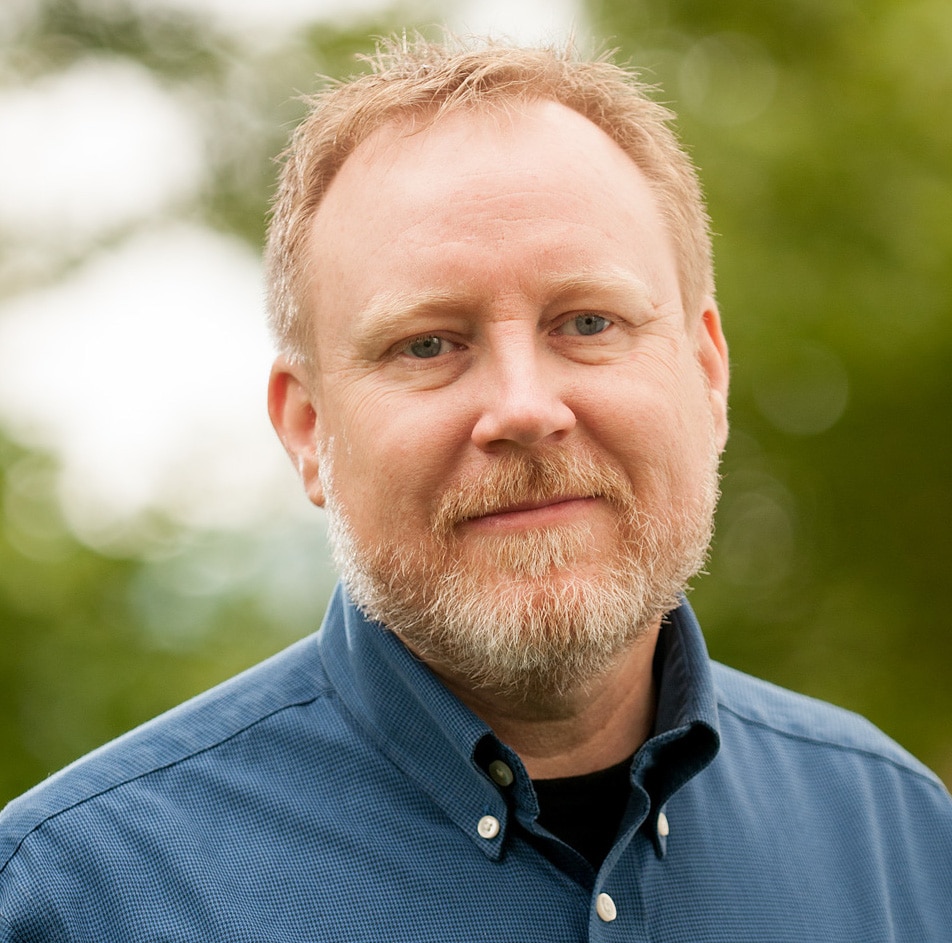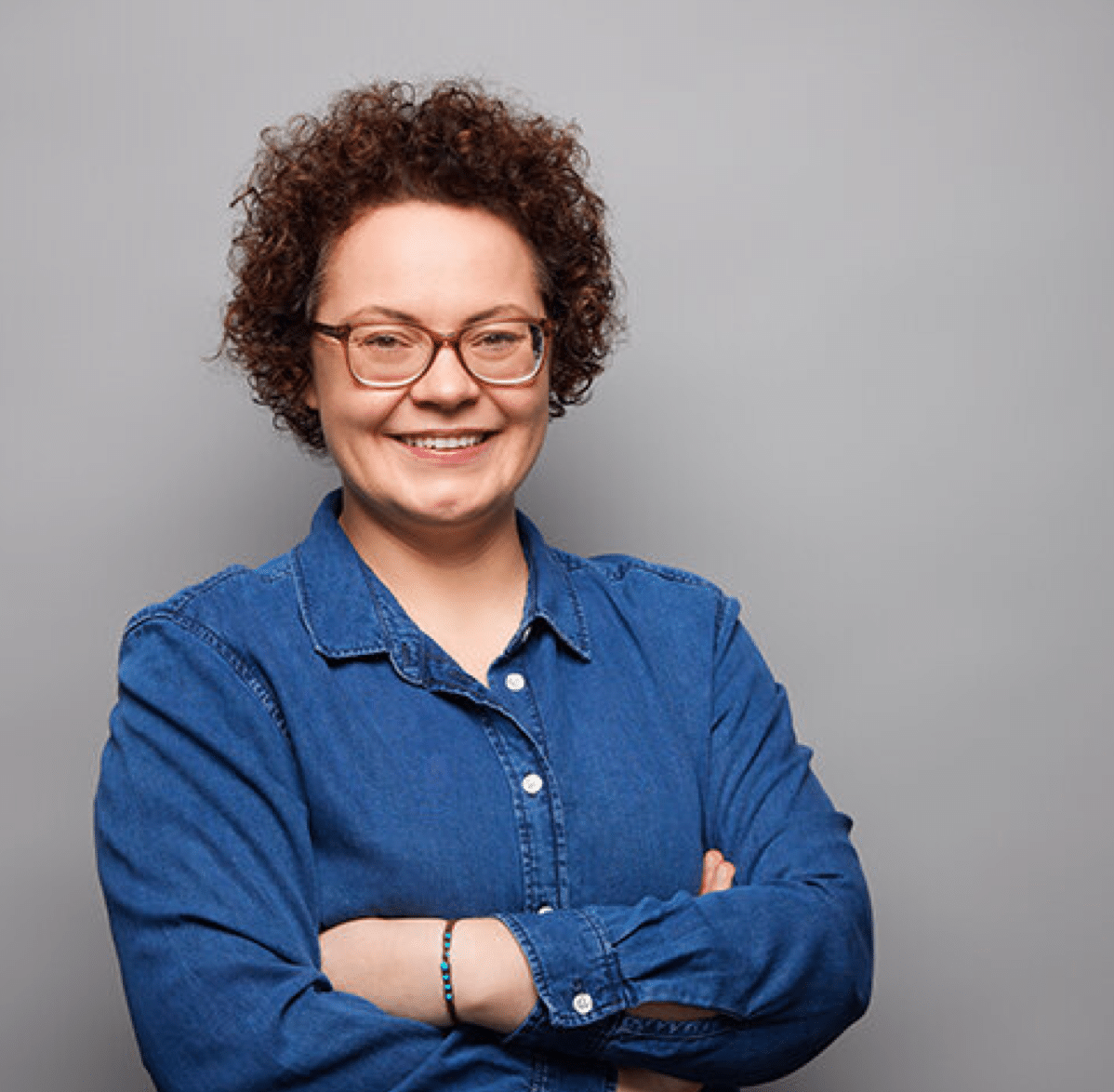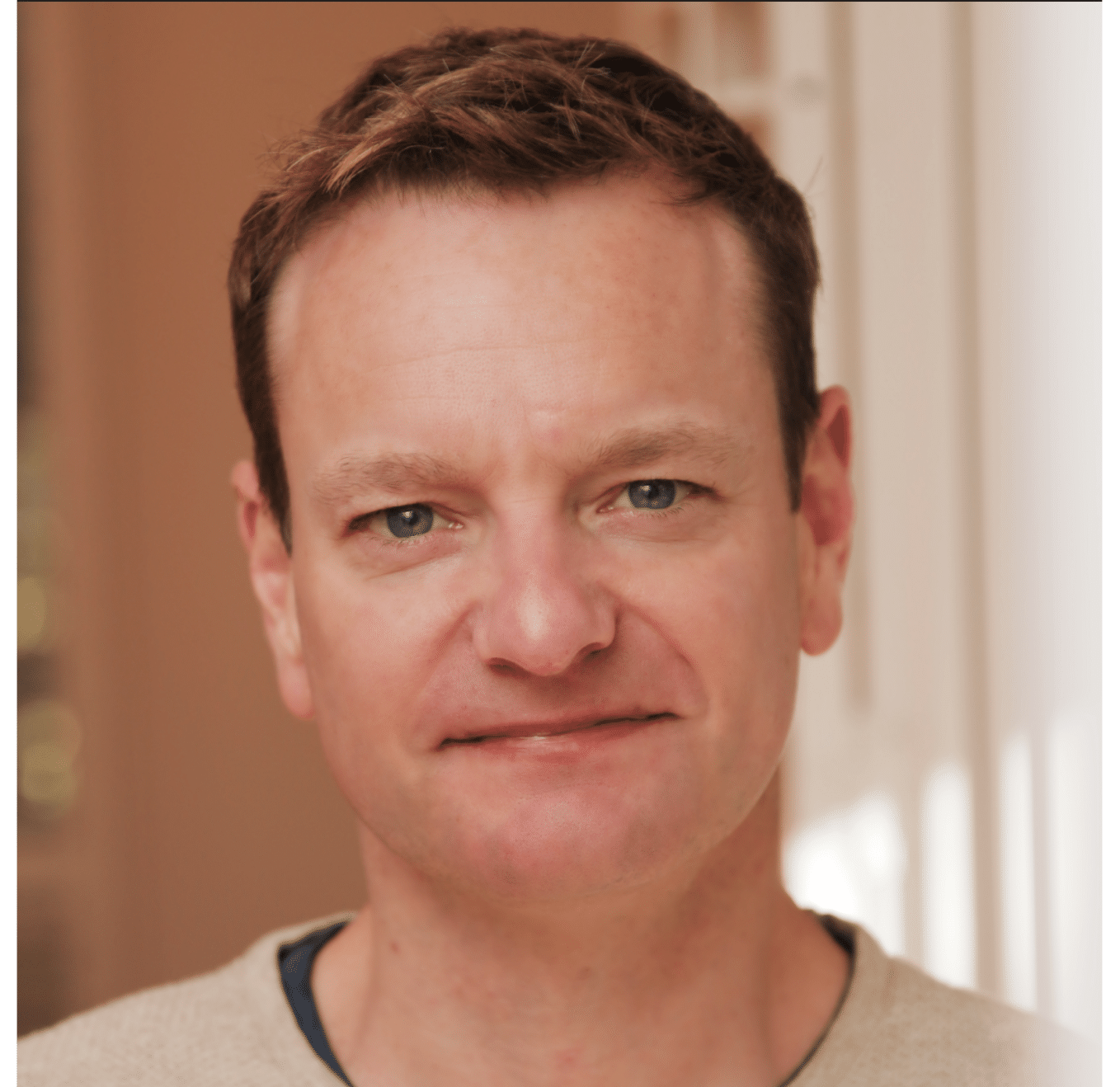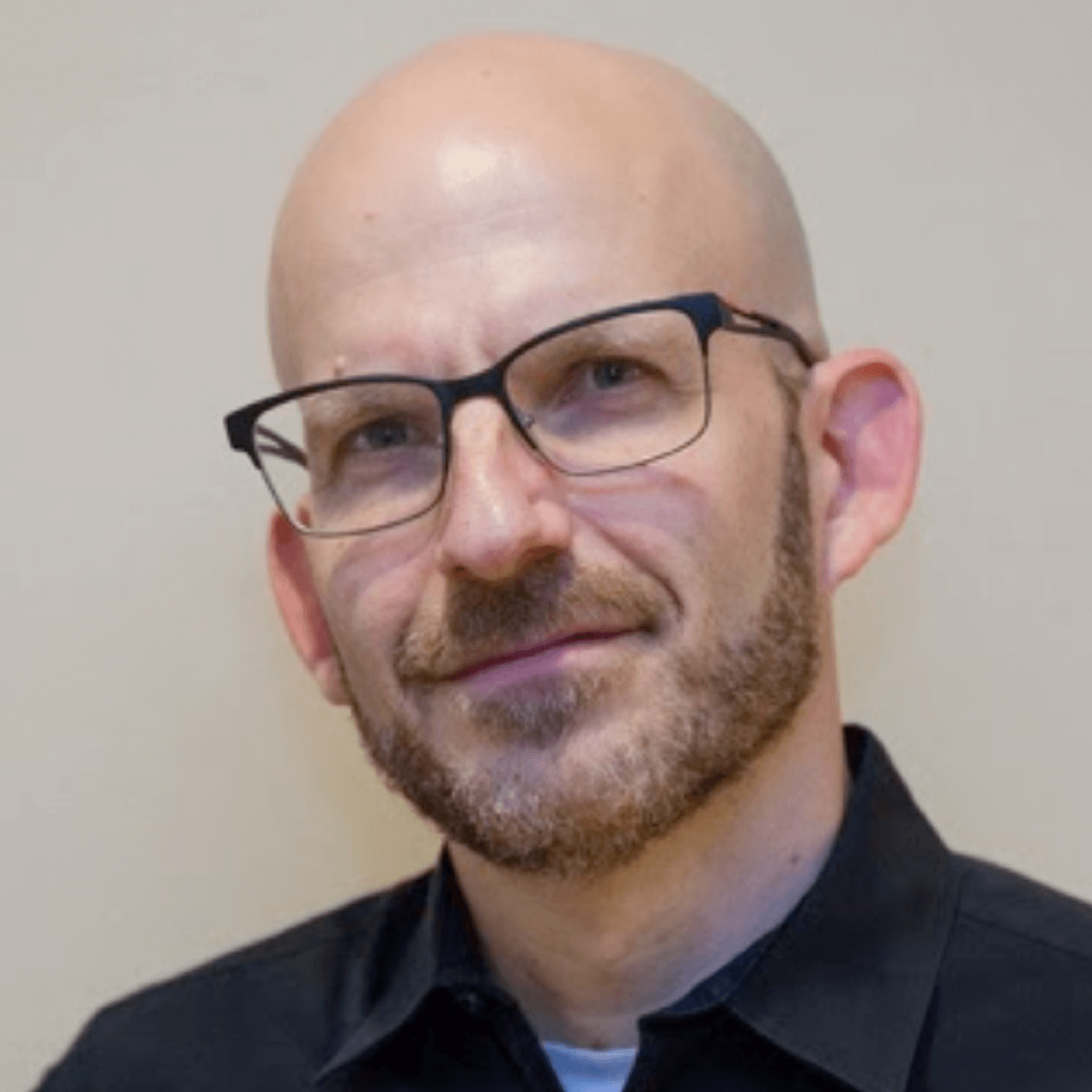Product Management Webinar: Better Product Manager
The Path to Becoming a Better Product Manager
What sets apart the good product managers from the great? Find out in this webinar with special guest Petra Wille, product leadership coach and author of “STRONG Product People”, and host Janna Bastow.
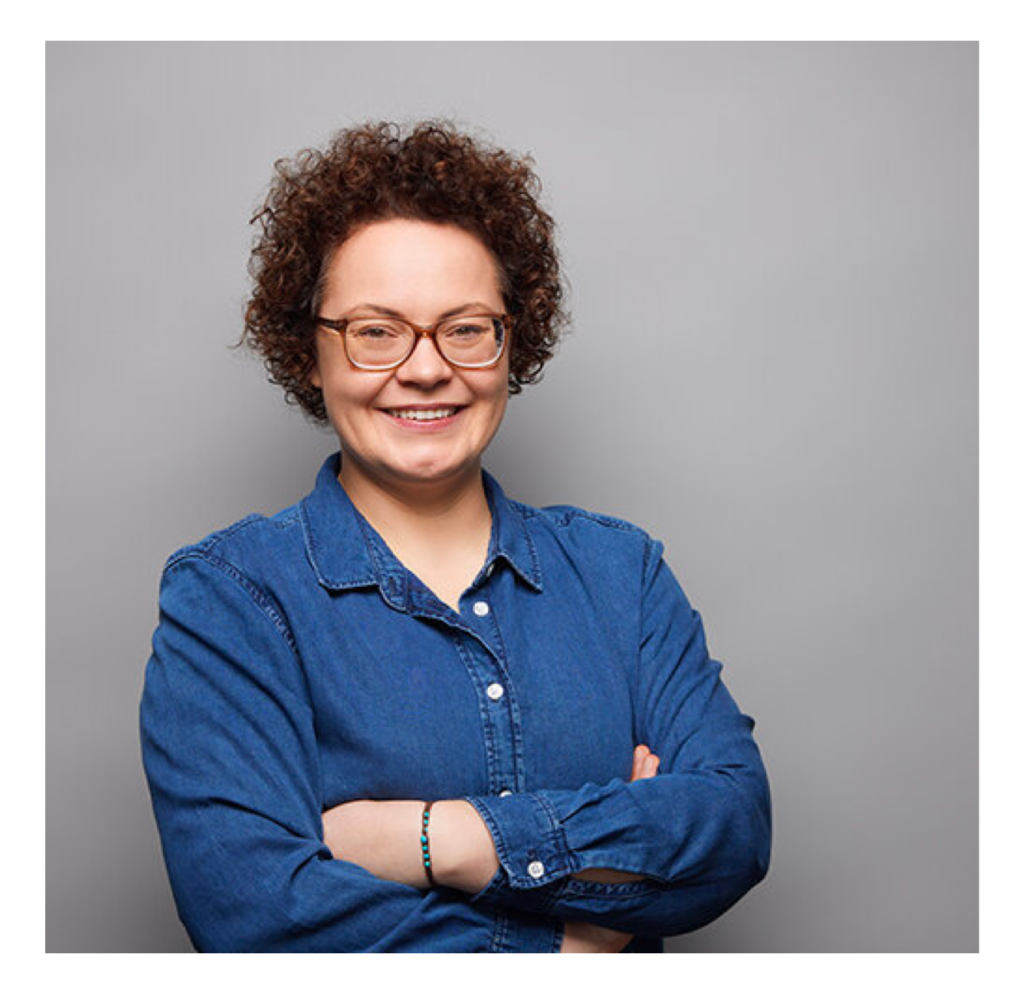
About Petra Wille
Petra Wille, is a product leadership coach and author of “STRONG Product People”.
Petra has been helping product teams boost their skill sets and up their game since 2013. Alongside her freelance work, Petra co-organizes and curates Mind the Product Engage Hamburg, Germany.
Key take aways
• A solid definition of what it takes to be a competent product manager
• People development for product people
• Frameworks to help you take control of your product journey
• And more!
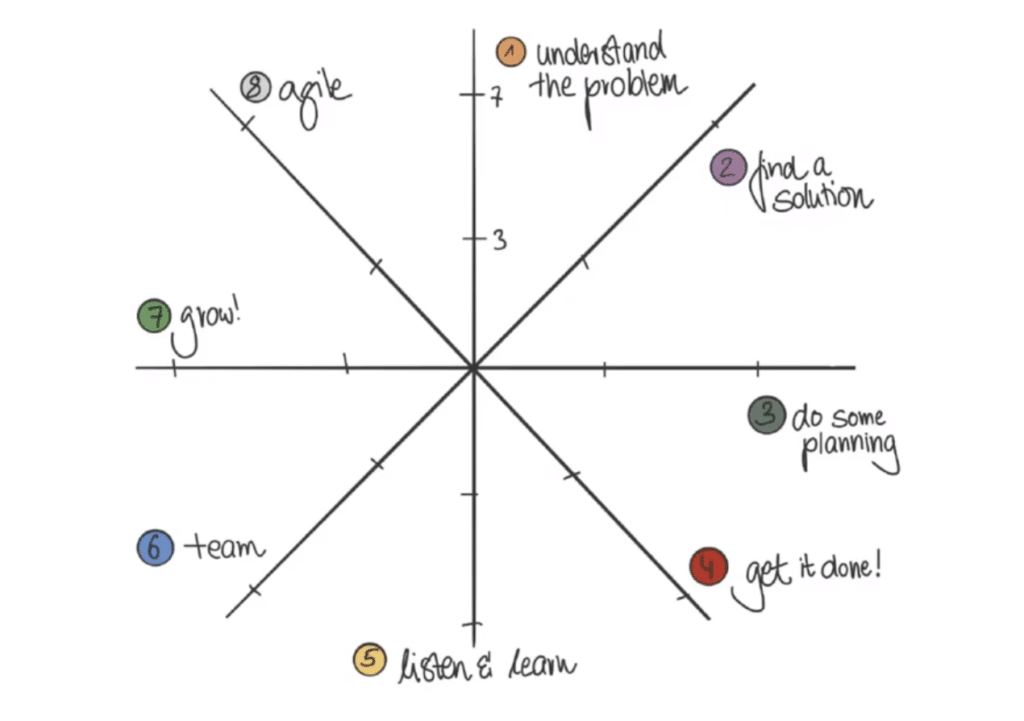
Janna Bastow: [00:00:00]
Hello, everybody, and welcome. So glad to have you all here. All right, let me get that chat up, because I want to see what you’re all saying as we are talking today as well. All right. Good. I’m seeing some familiar faces, good to see you all here. All right. So welcome to our series of webinars that we run here at ProdPad. And what we tend to do here is we have a mix of presentations and firesides that we include as this series of webinars that we run here at ProdPad. And we always invite amazing experts that we know, and that we find out there in the real world who bring to us their excellent insights. And it’s always with this focus on the content and the learning and the sharing. So you’re going to be getting lots of that today.
Today is going to be recorded and shared afterwards, and you will have a chance to ask questions. So by all means get in here, make use of the chat, make use of the Q&A section to ask your questions. And you will get a copy of this afterwards as well. We’ll be putting it up on our page, so you’ll be able to get the info on this, so you can share it around to your colleagues and all that kind of stuff.
Before I jump in and get started with this, I just want to tell you a little bit about ProdPad, which is what we do. It was originally a tool built by myself and my co-founder, Simon. You might know us as a couple of the founders of Mind the Product, but we were product managers ourselves originally, and we needed tools to do our own jobs.
We needed something to keep track of the experiments we were running to try to hit the business objectives and to try to solve our customer problems and to keep tabs on all the ideas and feedback that made up our backlog. And building ProdPad gave us control and organization and transparency. So it wasn’t long before we shared it with the other product people that we knew around us. And today, it’s used by thousands of teams around the world. And it’s free to try, we have a Sandbox mode where it has example product management data, so you can actually see how things like lean roadmaps and OKRs and experiments, and everything else fits together in this product management space. And our team is made up of product people, myself and my co-founder are product people, we’ve got a bunch of product people throughout the team. So start a trial today and then get in touch and let us know your feedback, we’d love to hear how it’s working.
I also have a special thing to announce, because every week we do interesting launches, we launch every Wednesday. And we actually did a really interesting one just recently, which is what we call Ask DotBot. And for those of you who don’t know DotBot, DotBot is the AI friend who lives in ProdPad, who makes connections and helps you de-duplicate and merge ideas and spot connections between the feedback your customers have and the ideas that your team is coming up with. So DotBot lives within ProdPad already, but you can now ask DotBot questions about your backlog of feedback. Ask it things like, “How could we improve this feature?”, or “What frustrates our customers about our product?”, or “What should we build next?”
And it will dig in, read, and figure out what your customers are asking for, and give you answers in a nice human readable format. So it’s a Beta mode feature, it is brand new, but for anybody who’s trialing ProdPad right now, you can turn on that Beta mode and give it a try, and we’d love your feedback on that as well.
So that’s enough about us. I want to talk about Petra Wille, because Petra has joined us here today, and she’s a wonderful guest, and I want to tell you a little bit about how I know Petra. I know her through Mind the Product. She’s one of the organizers and she’s the curator behind the Mind the Product Engage Hamburg event. So if anybody’s ever been to a Mind the Product event or the Engage Events Petra is one of the forces behind that.
And she’s also a product leadership coach and the author of this amazing new book called STRONG Product People. So Petra and I have hung out in cities all over the place, usually at Mind the Product conferences and related festivities around that, ask us about the boats and all that. You know, we’re long overdue for real life catch-up, Petra, you and I but in the meantime, Petra’s used her lockdown time to write this new book, which we’re gonna be hearing about, and we’re actually gonna be raffling offline to to one of you lucky listeners today, as a signed copy from Petra. Today, ask your questions in the Q&A bar in Zoom, I’m gonna try to pick up some of these questions as we go, and as well as if we have extra time at the end, we’ll definitely have time for questions. Petra, huge welcome for me, and everyone, jump in and say hello to Petra!
Petra Wille: [00:04:24]
Hello, everyone. Thanks for having me today!
Janna Bastow: [00:04:28]
So Petra, you’ve been a leadership coach for years and, you’ve recently launched this new book I also wanted to hear more about this product coaching cards concept that you’ve done, so we’ll hear about that a little bit later. But just to make sure everyone’s on the same page, can you tell us a little bit about yourself and your background?
Petra Wille: [00:04:49]
Sure. Happy to do so! My background is actually pretty classical product management career path, so to say. Started out as an engineer so that was the first four years of the job, and slowly transitioned into what was called a project management role back at the time. My engineering colleagues just pushed me in front of the customer, and said “You are the one, you’re good at talking, you’re good at bringing these requirements back, you’re good at discussing timelines with them and explaining why things are taking longer than we actually expected.” So that’s actually how I started. And after doing this project management role for one or two years, I saw a product management job description online, and I read through it, never heard of product management, but it fit exactly my skills and my competencies and what I wanted to do.
So it was a bit of a lucky coincidence that I stumbled upon this job ad. I applied, I landed the job, which was super cool. It was an 80 people startup back at the time, so rather small social network platform, a business social network, which is called Xing, and rather popular in the German speaking market, so to say. It’s a bit like LinkedIn, or it was, but like LinkedIn back at the time. Yeah, and from there I, yeah, climbed the product management career ladder, so to say, a lot of individual contributor, senior product management work ultimately took a, head of product role at the startup later, did this for several years, and then seven years back, decided that I want to do this freelance first as an interim Head of Product, I did a lot of interims leadership gigs.
In Germany, it’s pretty common that people are on paternity leave or maternity leave for about a year. So whenever a product leader leaves for that long a period of time, then somebody else needs to take care of the product team. And that’s the first things that I did. And then naturally or, yeah, gradually, it became more of a product coaching role, so the product lead was still there, but can somebody from outside bring another perspective and help us improve the product craft in our company? Yeah, and the last two years, I’m mainly focusing on helping product leaders to get better at what they do, and a big part of that as we all know, or as most of the product people would hope, is people development, and that’s what the book is talking about mainly. So how can a product leader be a great coach for product folks? How can they help them understand what better looks like? So a more competent version of themselves, how can they help them excel in what they’re currently doing? And that’s what the book mainly talks about. Yeah.
Janna Bastow: [00:07:36]
Yeah. What an amazing, what an important topic, really, because, at the end of the day product managers often fill their time looking at different frameworks or different tactics that they can do, different hard skills they can pick up, but at the end of the day, it’s the people side of the role that’s the most difficult. As I once said I did a talk that was basically called People are Hard [laughs].
Petra Wille: [00:07:59]
[laughs] Remember that one, it was awesome.
Janna Bastow: [00:08:01]
And it wasn’t as, it wasn’t as definitive as yours about what to actually do with the people. And , you it’s really good to see you taking these tough challenges and actually putting some interesting frameworks around it helping people break down some of these challenges, understanding where they’re coming from, and what they can actually practically do about it in their jobs.
Petra Wille: [00:08:19]
Yeah. Because it’s super hard for product leads to start with a blank slate, so to say, right? So how could you actually manage expectations and explain to your product managers what you think good should look like. So what is your definition of good, and it’s super hard to start with a blank slate, so that’s why I created what we will for sure be talking about as well, I call it the product management wheel. It’s a framework to actually help people to reflect on what they’re already capable of, and where there may be gaps or white spots, or what they could actually learn more or try more. And that helps, and I, but I strongly encourage companies to customize this to their needs. So it’s not a one size fits all always. Yeah, you have it up here.
Janna Bastow: [00:09:00]
There we go. I have the wheel for you here.
Petra Wille: [00:09:02]
Awesome [laughing]. Should I briefly talk the audience through it, maybe, maybe –
Janna Bastow: [00:09:08]
Yeah. It’d actually really good to hear a little bit about what this what this wheel means and how you use it.
Petra Wille: [00:09:14]
Yeah. The idea was to come up with something—career frameworks often are super focused on the soft skill part of the job, because that’s usually what you can come up in the company to rule them all, so to say, because the soft skill part is something the HR folks need, and maybe the business development folks need, the marketing folks, and the product folks, and the engineers. So that’s why it is easy to create a framework, which is mainly talking about the soft skills, communication, collaboration, all these kind of things. But when it comes to the more, “How are you doing this product management work, what is the important steps in the process, what are the skills and the competencies you need to acquire?” Then it’s often harder to find a framework that is actually doing this.
And I was creating that, 2016, where, for my own, actually for my own coaching practice, because when you start a coaching, a good coach would actually do something like, “Okay, let’s figure out where you actually are, where you want to end up, how I can help you to get there, what are your current goals?” and I was lacking such a framework, and the frameworks out there were not sufficient or not tailored to the needs of a product person. That’s, so that’s why I came up with the product wheel, and it actually talks about eight dimensions. I tried to make it as tool and framework agnostic as possible. It still talks about things like product discovery, and if you’re using a different name in your company, that’s perfectly fine, right, so as said, you need to customize it.
And it’s even a great tool for a self-assessment too, so to all the product folks out there, if your boss is maybe not taking care about your personal development that much, you could use it. Fill it out on your own, or ask your engineers, quality assurance folks, your agile coach for a bit of feedback as well which makes a pretty nice 360 degree feedback to some extent. And that’s how you can identify the things you want to actually improve. The eight dimensions are, so first of all, it’s, is the product manager able to understand underlying customer problems, what customer pain points are, or what the company actually needs in the current situation? So that’s the understand the problem part. Then once they understand the problem, are they able to ideate on various solutions and maybe test them and experiment a bit, do some planning, is really the roadmapping part, and what do we do, what do we want to do next, and what’s maybe a later, and what’s maybe a never.
So that’s the, do some planning part. Get it done is, are they actually able to rally their development team behind a shared goal, and do they know how to iteratively release things and create software? So that’s really like the day to day work with a Scrum team or an agile team. Listen and learn is, once we put it out there, is the product manager able to listen to the voice of the customer that can be touching upon user data and are they then able to, again, learn from what the customer is saying and iterate again on the product? And the last three buckets are a bit out of this whole product development cycle, it’s team, because I think understanding a team and how team motivation works is a totally different game and another skill to have as a product manager. So that’s a lot talking about how to actually achieve this? Can the team be motivated, how can the team be motivated?
Growth is the personal growth part. So is this product manager investing a bit of her time to actually focus on personal growth? And agile is on that list. You could argue it’s more or less included in the get it done bucket but I find so many product managers in my coaching not even knowing the underlying principles of agile. So that’s just like how I am making sure in my coaching, that we’re touching upon topics like agile values and agile principles. So the nuts and bolts of agile or not so much the, “Can you run the perfect retrospective?”, or something like that. And all of these buckets come with at least 15 detailed questions. So is she able to run user interviews? Has she heard of human biases? So really things you could tick off and say yes, no, or you could give yourself, as indicated here, a rating from one to seven, or use competency level, so I have heard of it, I have applied it once, I have applied it several times. So the scale is a different topic. But that’s how actually the PM Wheel could be used.
Janna Bastow: [00:13:46]
Oh, excellent. Excellent. So you’ve actually got these 15 questions that go alongside this PM Wheel?
Petra Wille: [00:13:52]
Yeah. If you download it, so it’s on my website, it’s for free, you can download it, and then it comes with all these questions, and it really helps to find your one development topic that you actually should focus on next.
Janna Bastow: [00:14:03]
Yeah, wonderful. I love these sort of these really practical frameworks that help you figure out where to improve, because you can imagine seeing yourself on this on this chart, figuring out that “Oh, actually, you know what, I’m good around here, but it dips in this spot. So maybe I should go— my next career move or my next way to develop myself is to improve in this area, and actually these are the ways that I could do so.”
Petra Wille: [00:14:25]
Yeah. Someone was asking for the URL for downloading it, and it’s strongproductpeople.com, all in one word, strongproductpeople.com then you should be able to download it. Yeah, and as Janna was saying, so that even works with, as I said, engineers or, and usually they struggle to give you random feedback. So if you ask them, “Hey, Tim, can you please give me some feedback? How am I doing currently?” That’s super hard for them because they never ever have reflected in detail what they want the product person to be like. So it massively helps if you have a bit of a framework, can hand it to them, and then really get their feedback in. So that’s helpful for this purpose as well.
Janna Bastow: [00:15:12]
Great. So thanks for sharing that one, Petra. And I know that you’ve got some other frameworks that you often find useful to share.
Petra Wille: [00:15:19]
The Future Self is the next one, the logical next one. So let’s assume we used the PM Wheel and we found out that prioritization, for example, is something this product person could actually up their game a bit then you could use the Future Self to create a development plan, or as I usually call it, a contract with myself. That’s a super simple framework for components, I encourage coaches that they write a bit about their As-Is descriptions. So when it comes to prioritization what are the things that are actually how you can tell that you’re not where, your skill is not where it should be. So for example, people are constantly complaining about my prioritization, they’re always asking why is the backlog in this order? I don’t get it. Or they’re talking behind my back and saying “Have you seen Petra’s backlog? It’s all over the place. No clue how she’s doing all of that.”
So that happens, right? So that would be things that you could put in your As-Is descriptions. So what are the things that are currently driving you mad about this one topic or that you actually want to learn? So it can be already, giving a hint to what do you want to learn. And then there is the To-Be description and there are two framing questions for that. And one is like, how do you, as a PM, want it to be? So maybe people stop talking behind your back about your weird prioritization scheme. Or how could others tell that you’ve improved on this particular competency, right? So what would they say, how would they actually see that I have improved in a certain skill? And then you, and it’s super hard to do it alone. So if your line manager is up for that, ask them if they can help you create action items, if there is no line manager interested that much in your personal development, and it’s coming in some of the companies, so yeah. That happens a lot.
Then find a learning buddy, then just pair up with another project manager or product manager, or the engineers, again, can be helpful. So it’s more like that somebody else is saying “Okay, but what would you really like to do about it?” So what are the things that you that you want to learn? So that you can tick off these boxes. I think it’s important to have something where you can tick off a box, one to five points, usually enough. Coming back to our prioritization example, that could be things like I actually never reflected on the prioritization criteria I have, maybe that’s my first step, and I put them down somewhere. And then I think, okay, is that the perfect way of prioritization? So next step would be, read more about what other people are saying, or what ProdPad is using, or read a book about roadmapping, or all this kind of stuff, and how prioritization works in these environments and stuff like this. So that could be action items, and I said, find somebody helping you create those, because it’s super hard to do that alone.
Janna Bastow: [00:18:10]
Yeah.
Petra Wille: [00:18:10]
And then talking about the period, I like to set something like a two to four month period. If it’s a longer period of time, then often, you don’t do it or forget about it, if it’s too short, then it consumes way too much time on your calendar, and we want this to be doable, right? So if it’s 20 minutes a week, that you’re really dedicating to this one thing you want to learn, and you do this over a period of time from two to four months, that’s awesome already . And so that is something that I use in my coaching practice as well, to create this development plan and only do one of them at a time, because people always have the tendency of, “Oh, I had so many shortcomings in the PM Wheel, so I want to do all of them, and I want to catch up with all of these skills.” But actually, I totally recommend to focus on one at a time. Yeah, take care about it for four months, for example, really have some action items, tick them off, really think about, how would it feel if I improve, and how would others be able to tell that I have improved a certain skill? And that’s how the Future Self can come into play when we, when we’re talking people development.
Janna Bastow: [00:19:18]
Yeah. That makes a lot of sense. This idea of framing it around, where it is that you wanna be, or how you picture yourself. I was reading this thing recently, that apparently people really struggle to visualize or empathize with their future self. So if they try to picture themselves in five years time they can’t so much. And that means that they struggle to take the steps to get themselves there. And so having something like this that sort of makes you lay out going where is it that you plan on being, and what actionable next steps could you take right now that will address these things that you’re trying to do, can be transformative. So these are really good coaching tips.
Petra Wille: [00:19:59]
And all of us are so familiar with doing this for our products. We have objectives and key results, it’s a bit of the same model, right? But sometimes we just struggle to use this on our own, we’re not taking the time for personal development. So I always encourage people to at least, some of their time should always go to the bucket of personal growth and learning new things, and then the Future Self or the PM Wheel could help.
Janna Bastow: [00:20:24]
Yup. Absolutely. James , in the comments just said, “You should treat your career as a product.” and I often say everything can be treated like a product in some ways, right? I mean maybe, it’s that whole hammer, everything’s a nail sort of thing, but I see a lot of things in that Build, Measure, Learn thing, right?
Petra Wille: [00:20:39]
Yeah. Yeah. Yeah. Totally.
Janna Bastow: [00:20:41]
And, I think with your career, you can think about what you’re actually measuring, what you’ve actually put together, and you can measure on that and iterate upon that and learn from that and improve on that. But oftentimes, we just get stuck in this sort of build, build, build, or go, go, go, mentality without actually stopping and thinking about what it is that we’re trying to do.
Petra Wille: [00:21:00]
Yeah. And, that is really touching on a nice point as well. I think you really need a support framework for your career development as well. Some call it the personal board of directors or something like this, so you really need to find people that are helping you along, that could be a mentor, it could be colleagues in the company you’re currently at but that is something else. If you treat it like a product, you need a team, right?
Janna Bastow: [00:21:22]
Yeah.
Petra Wille: [00:21:23]
…go find some people that help you. And if, even if it’s just a quarterly reflection or something like that, already massively valuable.
Janna Bastow: [00:21:31]
Yeah, absolutely. Actually that was one of the most transformative things from my own career, was meeting other product people. Because basically, when you’re a product person, you’re the only product person in your team a lot of the times, right?
Petra Wille: [00:21:41]
Yeah.
Janna Bastow: [00:21:41]
Especially when I got into this 15 years ago. And what you realize is you’re surrounded by people who are all better at their jobs than you are, right? They’re all, they can code, and they can do sales, and they can do copy and everything else like that, and you’re the Jack of all trades, you aren’t particularly good at anything, and you’re not really sure what product is meant to do, and there’s no one to talk to about it.
Petra Wille: [00:22:01]
Yeah. Yeah.
Janna Bastow: [00:22:03]
[laughs]
Petra Wille: [00:22:03]
And it gets, it gets more lonely the more you climb the career ladder as well, right?
Janna Bastow: [00:22:06]
Yeah.
Petra Wille: [00:22:06]
Once you’re a product leader or a founder of a company, it’s even harder to find others too.
Janna Bastow: [00:22:12]
One of the best things that happened was when we started doing the product tank meetups, which was just, it, wasn’t a way to say that we wanted to meet other product people to tell them, we knew how to do product, Mind the Product was not built on that, it was built on the idea of, “We don’t know what we’re doing, but maybe if we meet other product people, they can tell us how to do their jobs, and we’ll figure it out from there.” And what we actually realized is that sharing experiences with other product people and building this network of other product people who’ve had these experiences like yours is super powerful. And so finding that that board, whether it’s a formal thing or even just an informal thing. You know, everyone listening in, if you don’t have a product friend go, go meet-
Petra Wille: [00:22:53]
Go meet product friend [laughs].
Janna Bastow: [00:22:54]
…another product friend, right? They’re all in here, drop your LinkedIns in the channel, go make some friends you know, join a product tank connect with me, do whatever you need to catch up-
Petra Wille: [00:23:07]
Yeah, and when, all of us who are belonging-
Janna Bastow: [00:23:07]
…talk to product people [laughs].
Petra Wille: [00:23:07]
And all of belong to some of these slack channels, right? And sometimes all you need to do is ask if somebody else has a similar challenge or is at a similar inflection point in their career, and you could pair up with those folks.
Janna Bastow: [00:23:19]
Yeah.
Petra Wille: [00:23:19]
Sometimes it’s just that you need to reach out.
Janna Bastow: [00:23:21]
Yeah. And that’s what I also find, is that a lot of the product challenges that we have are so much the same. I mean, the, the situations are different, but so much of the undercurrents are very, very similar, right? It comes down to communication problems, it comes down to people problems, it comes down to skills problems, it comes down to some of the same core themes overall, and just understanding how you handle those things makes a huge difference.
Petra Wille: [00:23:50]
Yeah. And it’s not always the next super expensive training that you need to book, sometimes it’s really just like your small learning group and use some material that’s already out there.
Janna Bastow: [00:24:01]
So one of the things that I really like is that you’ve done a lot of this personal development around product managers. What sort of things should product people do? Do you have any sort of steps or any suggestions that product people can do to put development on the agenda for themselves?
Petra Wille: [00:24:17]
I think first of all, it’s really key that you find the time, and finding the time is super hard in our busy calendars. But for me, it is key that just put on a sheet of paper why you should care about your personal development, that really helps. And, and really look a bit far out in the future, so if you become a more competent product manager, it’s maybe easier to land your next job, and maybe that’s the dream job, or if you’re learning this particular skill, you might actually be able to land the next role or vacant position in your current company or something like this, right? So when you struggle to find the time for your personal development and really think about, okay, why should I care about my personal development? What’s the uptake of it? Earning more money maybe, even if it’s, that’s your motivation, it’s perfectly fine, we all have a good-
Janna Bastow: [00:25:06] [laughing]
That’s legit. We don’t do this for free [laughing].
Petra Wille: [00:25:10]
Yeah, none of us. So, so really find something that motivates you. For some people, it is maybe if I get more efficient in my job, then I can actually decide to do it four days a week and not five days a week, because I can do more or less the same stuff and way more efficient and can spend more time with the family. So whatever it is that motivates you, really take this time, put it down somewhere, put a sticker on your, I don’t know, screen that actually says invest a bit of time in your personal growth because, reasons, right? So that helps a lot and that’s a nice trick. And then it’s really about persistence. Yeah, that you, week after week, you have just 20 minutes of reading time, or just 20 minutes of trying something new, or you have a monthly meeting with some peers of yours watching talks together from your favorite conference or something like this, and then discuss what you learned, right?
So all these things are super helpful. And so the time factor is key, and then the do it week after week, I think that is super important. Yeah, and then find, and hopefully your line manager will help you with this, find the next bigger challenge, that is important as well. Because none of us only needs to learn new know-how, that’s not how we actually do our job, we need to learn new skills, and skills is something, you hear about something, you read about it, you think it’s a nice idea, we should try it. You apply it in one situation, you will massively fail, because the first few user interviews are always super bad, but the next ones will be way better if you have the time to reflect and do it again, right? But to do this, somebody needs to make some room for you, and applying your new skill of doing user interviews.
So this next bigger challenge is the question, could this be a more strategic project, or could this be a project that requires way more storytelling? If storytelling is something you want to improve. And usually it’s way easier to do this if you’re a line manager of somebody, you could have a list of all your employees and really think about, okay, what would be the next bigger challenge I would love to assign them to make sure that they really learn something new and can apply what they learned? And I said, even if you’re an individual contributor, you can really think about, what could that be? That could be a side project of yours, if nothing is on the horizon in your current company, or you could actively approach your line manager and say “Hey, look, that’s something I want to learn, I have some ideas how I could do it, but I need a chance to apply it otherwise it’s a waste of time. So could you please help me find something where I could try this methodology or apply this new skill?” So that’s another another tip of mine. Think about the next bigger challenge you want to take on.
Janna Bastow: [00:28:04]
Oh yeah. I really like that. I like what you said about you know, sometimes, your user tests, your first ones, are going to be terrible, but you’ll get better at them over time. I don’t think a lot of people realize that product management is like this muscle, right? You’ve gotta work it, you’ve gotta practice at it, and it’s going to be terrible at first. You know, none of these things that we do feel natural. And so it’s type of thing that you do a few of them and you start getting the hang of it, right? The user testing starts to become more natural over time, until it becomes second nature. And that’s when you realize that, okay, now it’s your time to step up and take on that bigger challenge. But it doesn’t feel natural, the stuff that we’re doing: we do sit there in rooms or in Zoom boxes asking awkward questions of people and, it takes guts and it takes some know-how and practice to do so.
Petra Wille: [00:28:51]
Yeah. And for so many of the things we do it’s like just like usually interviewing, it’s just like one piece of the puzzle.
Janna Bastow: [00:28:59]
Yeah. Yeah.
Petra Wille: [00:28:59]
Yeah. And that’s why you really need to have the time to reflect on what you learned, to improve the methodologies you were using, maybe looking for another tool that will support you better, all these kind of things. And yeah, you need the room for that and you need time for that and you need resources and hopefully somebody who is assigning you to the perfect challenge to apply this new skill.
Janna Bastow: [00:29:23]
Yeah, absolutely. I like that in your book, you’ve got a chapter specifically around making time, like making time for these important pieces, because oftentimes they just end up getting skipped. If you don’t make time for this, then you’ll just end up in this phase of just constantly doing stuff, but not actually learning from it.
Petra Wille: [00:29:40]
And especially from a product leader standpoint, this is super weird, because product leads spend tons of hours in hiring, and in interviews and in all of these, how can we bring on new talent? But it’s super common that they not take the same amount of time to invest it in onboarding and actually developing the folks that are already on board. And that is a bit of a weird balance, and I hope this will change over time. So at least a bit of the time should be invested in the personal development of the product people that are already in their product organization.
Janna Bastow: [00:30:15]
That is incredibly insightful. That’s like a product manager who spends all their time just getting people in the door, but doesn’t spend any time worrying about churn or retention figures. That’s not going to be a successful product overall, right?
Petra Wille: [00:30:28]
Yeah, exactly.
Janna Bastow: [00:30:29]
[laughing] Who knew?
Petra Wille: [00:30:31]
[laughing] Who knew? And just, when I ask them or when I make them aware of this fact, then they usually say yeah, but they have training budget. And I’m always like, you have a training budget. You need to really take care of these people. And for example, this next bigger challenge question, that’s exactly something a line manager can easily do because they have more oversight over the upcoming things in the company, so for them it’s way easier to identify this next challenge for each one on the team. Yeah.
Janna Bastow: [00:30:59]
Yeah. Excellent. Excellent.
So you’ve got product leaders, they’ve gone through these steps, they’ve improved themselves, they’ve thought about these next steps and they’re moving on up. What are the key ingredients, you talk about this in your book, the key ingredients for upping your people development game, for being an awesome coach to your product people? Can tell us more about that?
Petra Wille: [00:31:18]
Yeah. Yeah, sure. So first of all, and I always was touching on that a bit in the beginning, you need to define your good, that’s how I name it in the book. So what makes a good product manager in your current situation, for your current company and yeah, from your personal perspective, right? And you could use something like the PM Wheel to talk about the skills and the competencies, but I think there’s more to that which is personality traits. I think it really makes sense to reflect on what other personality traits that I would like to see in product managers that I’m hiring, and that I’m actually managing. Not that you can change much about it, but it really helps you in the process of creating a team. For me, for example, curiosity is always something I’m looking for because all the great product managers I know are curious human beings.
So they’re curious about all the things that are happening on this world, more or less. And that tremendously helps if you are you’re taking care about the product, they’re interested in human beings as well, and all these kind of things, right? So reflect on the personality trait, and there’s quick little game that you could play to actually get that started. It will not get you to the finished result, but it gets you started. So think about the worst product manager you ever worked with, create a list of the personality traits they have been showing, and then create a positive framing for that, right? If you say super not interested in the world, then curiosity might be the one that you have on the opposite scale. So that’s how you can get going with this personality trait thing.
Or you could do a bit of a reverse engineering and look at your current team and think what do they all have in common? Is there a personality pattern that I see and really reflect on, “Okay, does that mean that I should bring more of that, or should I actually go for diversity and hire the opposite to bring in a nicer mix of people, or something like this?” So personality traits, reflect on that, skills and capabilities, use something like the PM Wheel to do this, and then I think it’s key to talk about values as well. And that can be, if there are company values, you could use them because then hopefully your folks are sharing some of the company values. If there are no company values, again, you could create product team values or even use your personal values. So that’s the definition of good, and that usually is step number one.
Then you need to do this assessment phase where you actually ask them to rank themselves, you ask them to ask some other colleagues to rank them, you give them some feedback, and then that gives a nice picture of, okay, what could be our next development topic we’re focusing on? Then you use the Future Self to create this contract with themselves and really get them going. And then it’s super important to follow up. So that for all product leaders out there, follow-ups are key. So don’t create these action items and then never ever ask again. And sometimes all it takes is “Hey, you were actually mentioning that is something you want to learn, that book you want to learn, how is it going? Do you want to send me a summary of the first chapters?”
And it’s not “Please send me a summary of the first chapter,” it’s more offer help, be a bit of a sounding board, and really pay attention, show them that you care. I think this is super, super important here as well. And please don’t, do not make your one-on-ones status updates all the time, sometimes focus on this people development part of the one-on-ones, and follow up with them on the things that they actually put on their agenda.
Janna Bastow: [00:34:59]
Yeah.
Petra Wille: [00:34:59]
But leave it with them. So it’s their job, the people development part is every employee’s job, but help them, be their coach, give them a tip or a trick and a bit of a reflection. I think that’s key. Sometimes even advice might be okay. And sometimes even radical candid feedback, because if you’re a line manager working in interest of the company, and the product manager is not yet competent, in your definition, then obviously you’ll need to give them the hard talk. But yeah, that’s part of the job.
Janna Bastow: [00:35:31]
Yeah, it absolutely is. But that’s the purpose of one-on-ones, not to just give back feedback or hard feedback, but that, that’s where you give that radical candor feedback and where it can be valuable if used in the right sort of way. But good one-on-ones are an art form, right? It’s the type of thing that takes practice and your first ones are really awkward and they’re not very good but then over time, you do get better at them [laughs].
Petra Wille: [00:35:59]
Yeah, that’s true.
Janna Bastow: [00:36:00]
Yup. Excellent. And if anybody has any questions, feel free to drop them into the Q&A section. Petra, there was another canvas that we had here as well, which was the Role Definition canvas. How does this fit in with everything?
Petra Wille: [00:36:16]
The Role Definition canvas is actually something that I often use when I start working with the teams. So it’s not so much that a role definition is missing in most of the companies, but usually it’s rather high level and people are not using it in their day-to-day lives. And I like teams—thanks for putting it up—and I like teams to use it, so then every role on the team, or even every person on the team tries to feel this. And then they say “Okay, you think this is your responsibility, but I think this is my responsibility, so maybe we should discuss who’s actually responsible for doing that,” right?
Janna Bastow: [00:36:58]
Yeah.
Petra Wille: [00:36:58]
Signing off a backlog item or testing it before it actually goes live. And is that the ultimate responsibility of the product manager or is it the ultimate responsibility of the quality assurance folks? So I really think it helps teams to understand, “Okay, what everybody thinks about their role, and where there are blind spots, where I need to discuss, okay, that’s maybe something that we never have thought about, but whose responsibility should that be, or what are the main tasks that I perform in this team?” And a lot of people, especially early on in their career, think that is totally obvious, so what a product manager does is totally obvious, but I can tell you from coaching, tons of product teams, it’s not. So even if people ask me “Do you think we should call our product folks product owners or product managers?”
Then I’m always like, “Yeah, I always think you should call them product managers, because product owners are just a role, but even if you want to call them product owners, it still doesn’t say anything to people outside of the company what they actually are doing, because it really needs a filled out role canvas to make this a bit more tangible.” So that’s how usually I am using this canvas to foster the discussion in the team to give them a bit more clarity on this, who is responsible for which part of the job or for the software development we’re doing together.
Janna Bastow: [00:38:25]
Yup. Yeah, absolutely. And Mark jumped in to say that this looks great for him, “Especially for those of us in a larger org,” he said. And yeah, I could see this being really helpful for large organizations. I could see this being helpful for smaller teams as well, because in a smaller team, you end up with everyone who’s T-shaped or Pi-shaped, and so everyone’s able to do a lot of different things, and they’re not quite sure as to where they cross over or handover, and everyone jumps on everything, which is great sometimes but also at the same time, it’s good to be able to identify the main tasks and the key responsibilities, and be able to actually write these things down. Great, framework, I appreciate this.
Petra Wille: [00:39:04]
Cool. Yeah. And it’s not, it’s really only, so it’s not that valuable if you use it just on your own for your own role. It becomes more valuable if you use it as a team and see the gaps and the overlaps and the conflict, so to say.
Janna Bastow: [00:39:17]
Yeah. Having a set of these that you can compare with each other.
Petra Wille: [00:39:21]
Yeah.
Janna Bastow: [00:39:21]
Yeah. A lot of this stuff is just about getting it out of your head, writing down your assumptions and sharing it somewhere, right?
Petra Wille: [00:39:27]
Yeah. That’s true. That is the case.
Janna Bastow: [00:39:30]
It reminds me a little bit of what we do with designs and prototyping. I mean, Prototyping is essentially this idea of taking your first thoughts and just jotting it down and then saying, “I made this, what do you think?” And even if it’s junk the whole point is to get feedback and find out how junk, and then fix the junk and make it better for the next time.
Petra Wille: [00:39:49]
Yeah. Yeah.
Janna Bastow: [00:39:49]
Which is which is fine, right? And, with something like this, if somebody writes down something here saying I think that my main tasks and responsibilities are these,” and if you see this overlap, you’re like, “Okay, we can adjust for this, right? We can iterate on this and figure it out.”
Petra Wille: [00:40:04]
And there is another benefit to it. If you are in the leadership position and you see your folks struggling with filling out the blanks here, then maybe there is an underlying problem that role clarity is something the leadership team should care a bit more, because if, for example, a product manager cannot fill in his goals and missions, what is the mission of my job, or what is the purpose? So why is there this role of product management? And if you’ve really struggled with this, then maybe you should sit down and really figure this out for the whole organization more or less. So that’s another thing. So if you’re using this as a product leader, for example, and teams massively struggle to fill in the gaps, then actually, please help them, take it one level up and see, how can you solve this?
Janna Bastow: [00:40:53]
Yeah, that makes a lot of sense. And somebody’s actually asked a question here, which is, how can someone with B2B product experience, like a product manager from B2B space, switch into B2C? Is it really hard to prepare?
Petra Wille: [00:41:07]
Do it [laughs]. Just do it. I think the other way round it might be even harder. Because what’s easier when you go from B2B to B2C is, it’s way easier usually to approach customers, talk to customers, bring them in for interviews. You have more user data usually, if you go from B2B to B2C. So most of the time, it’s easier because it’s easy to get in touch with the customers. I saw so many people making both jumps, so from B2C to B2B, and the other way round, and most of them would say it was way easier than they thought, once you understood the underlying principles of product management and that it’s always, “Okay, what are the underlying problems? How could we solve them in the best way with the technology we are having, and the engineering capabilities we’re having?” So if you understood these underlying principles, it actually doesn’t matter that much what the product is all about. For sure, you should be interested in it and curious to learn what it takes to create this particular problem and what it solves for the customer and client.
But if you’re interested in it, I think it’s way easier to do the, the transition, and would encourage you to do if you’re interested in this, do it. It’s more a matter of company culture then, because some of the B2B companies have totally different company cultures than the B2C ones, so that is something that I would actually really pay attention to in the interviewing process, could I be doing right work here as well, would I be able to learn the important things, and are they aware that it’s maybe a stretch in the beginning and that I have to learn new things? So can I take it a bit easy in the beginning, picking up with all the new things that I have to catch up. So that would be more of my question.
Janna Bastow: [00:43:01]
That’s a really good point about figuring out as to whether the company is going to be a good fit for you, because you might have a certain set of skills and a particular aptitude, and, you might be a product manager that sort of fits like this. But doesn’t mean that the role, just because it says product manager at the top, doesn’t mean it’s going to be a perfect fit for you, or that the company is gonna be a perfect fit for you.
Petra Wille: [00:43:19]
Yeah.
Janna Bastow: [00:43:19]
And that’s okay, because there’s a ton of different product roles out there, and they’re all differently shaped. And it’s a matter of, when you’re going in there and interviewing, you asking the tough questions of them to figure out if they’ve got a good product culture as well. Ask them questions about, “When was the last time they had a big failure and how did they handle it? What happened to the last product manager? Can you see their roadmap?” Ask them to see this stuff and ask them to answer these types of questions. Ask to interview people on the team and get a sense of what they’re like as well. If they seem a little bit like they’re hiding this stuff away, you might get the sense that maybe you’re going into a company that’s-
Petra Wille: [00:43:58]
Don’t.
Janna Bastow: [00:43:59]
Maybe not, yeah [laughs].
Petra Wille: [00:44:02]
Don’t join them [laughing]. And that is maybe more common in the B2B world, right? So that the larger corporates working still in rather old ways of doing product management, so that is something you want to check in the interview process. But it’s not the product itself. So I encourage you, if that is the only thing that is holding you back, “I’ve always worked on B2B products, but I would love to work on B2C products,” go do.
Janna Bastow: [00:44:29]
[affirmative]. The other point on that is the fact that you know what, honestly, like moving from one space to the other is actually beneficial. Like I think as a product person, if you come in with fresh eyes and you don’t actually know the space you come in with fresh eyes, more curiosity, the bigger, more interesting questions, if you come in and you feel like you already know the space, you might not actually see the angles that your competitors are seeing.
Petra Wille: [00:44:58]
Yeah.
Janna Bastow: [00:44:58]
You know, a lot of the competitors that are coming in and disrupting these big players aren’t in that particular space. Look at FinTech, for example.
Yeah. FinTech, yeah.
They are not FinTech players, right? The people coming in disrupting healthcare right now are not healthcare players. And they’re not being run by people who necessarily had the history in that. It’s people looking at things and changing the way that you think about these spaces and that can be really healthy.
Petra Wille: [00:45:22]
Yeah.
Janna Bastow: [00:45:25]
So yeah, moving from one space to the other: do it. It’s, it’s really good for your career, you’ll pick up a wider range of different things. When preparing for the interview, read a few articles and listen to some talks about people talking about how they manage B2B products or B2C products or B-to-whatever product, whatever you’re doing. So you have some lingo and you kind of know what they’re doing. And always, like with any job, always research the company, and try to figure out what problem they’re trying to solve with the role that they are filling, right? So when they post that job, that you should be able to pick up on clues on what problem they have, and you should be pitching yourself and saying, “Here’s the problem I’m gonna solve for you by being your product manager.”
Petra Wille: [00:46:04]
Yeah. And maybe they’re actively seeking somebody who brings in this new perspective and this different background, and they’re looking for more, a more diverse product team. And then it’s a perfect time to join, right? If they are actually openly stating, “Hey, look, we have too few people that have a different background, we want to change that. Then it’s a perfect time to join such a company.
Janna Bastow: [00:46:29]
Yup. Yup, absolutely. Another question here from Danny, he says, “As an associate PM, I’m looking to develop as quickly as possible. Does the PM Wheel and Future Self still apply, or should I focus on other learnings before using those?
Petra Wille: [00:46:46]
No. You can, I think you can use them right away. What you still would need is somebody help you find the great resource as a bit of a curation for you, because I think if you’re an associate, that’s the hard thing, because then you see, “Oh, prioritization is something I should learn,” but then how are you actually going to do that, right? So again, find a learning buddy, find somebody who has a bit more experience or read the blogs we’re all reading. So Mind the Product is writing an awesome blog and you could start reading from there. Figure out or ask people, what are great folks to follow on Twitter that are sharing great content regularly. Content that is more or less for your career level, because there’s a lot of advanced stuff out there as well. That’s maybe not a good start. Ask for good books that you could start with and, and then you build it from there, right? So I think you can use the PM Wheel, I think you should use the Future Self, but you need somebody helping you to figure out what is the best way to learn this new skills and what are the good resources to actually do so, or even what are trainings that could be helpful in the situation?
Janna Bastow: [00:47:55]
Yeah. Excellent. Oh, James has just asked, he’d love to get Petra’s thought on career paths for PMs.
Petra Wille: [00:48:04]
Oh. Yeah, Ken Norton just published a really nice article about that, yesterday or something like this. So look it up, Ken Norton, career paths for product manager. So my take on the career path is the following. First of all, you want to become a team product manager, that’s how I call it. So you want to be capable to work with a product development team and you are able to oversee, let’s say, time horizon, something like eight weeks. And that, that already is a stretch. So because then you’re making decisions about what this team should be doing for a decent amount of time. So that’s investment decisions, and it’s a big responsibility. And to nail that already is not easy. You focus on late stage testing, so to say, so a bit of usability testing, learning from A/B testing, for example, iterate on some features, so that’s how you’re usually starting.
But then you are not, so that’s why I call in my book, the team-focused PM. From my perspective, you’re then not yet competent. A competent PM is able to work a bit more strategically, is able to set goals and objectives of, a bit more far out, maybe like a 12 months horizon or something like this. That would be something that would be cool. And you need to be better in storytelling and how to rally the team behind this shared goal you’re creating. So it’s more than just like being able to handle the task board and the stand up and several iterations, right? So that, that’s the first step, but then you want to do more of the strategic work, more of the storytelling stuff. I think that’s what makes a competent PM.
And then there is a split in the road or fork, so to speak. Then you obviously could work on more strategic products. That is always something you could be focusing on different products that we were discussing, the B2B, B2C thing. Because I think for example, if you just have done it once in one company, in one environment, that is not what it takes to become, for example, in my perspective, a super senior product manager. So you need to go out there and apply what you learned in various contexts, so to say. That is something you could be doing. And then you might ultimately become a line manager, and responsible for leading a team of product folks, or you can stay on the individual contributor track and do more what principal product managers do. And that could be focusing on creating a community of practice.
So how are we as a company doing product management how can we improve the craft here, what are the things that we want to share across board, you could help onboard associates and the new joiners, all these kind of things. That is something the seniors take on, or their principal roles, so it depends. And I think it’s way too rare that companies allow people to be in their product management IC role for a decent amount of time. Some of us just don’t want to be in leadership position, and not all of us should be in a leadership position, because it’s a different job to have, and many of us are then missing the nitty-gritty product management work that they used to do. So, yeah, that’s the career path to take on.
Janna Bastow: [00:51:34]
Yeah.
Petra Wille: [00:51:34]
And it really it really varies, so title and all this stuff, we can talk titles, because again, that is so dependent on the company size and where the company is located, and there are massive differences in how roles are called in Europe and in the U.S., for example. Yeah.
Janna Bastow: [00:51:52]
Yeah.
Petra Wille: [00:51:52]
It’s hard to talk titles.
Janna Bastow: [00:51:54]
Yeah, that makes sense. Because titles are, I think, overrated anyways. I think they’re really difficult to pin down from country to country, from space to space, from company to company. But it is important to have them defined within the company.
Petra Wille: [00:52:07]
Yeah.
Janna Bastow: [00:52:08]
And on that note, somebody asked a question, “How can you push a company to set up a product career path and frameworks?”
Petra Wille: [00:52:16]
I’m not sure if you can. It is, yeah that’s something I try with the book, to tell them, “Hey, people development is something you should really care about.” so it always boils down to start with the “Why?”. So if you want somebody to take care about something, then they really need to understand what’s in it for them. So if you want to convince a whole organization that they should look more into the people development thing or how product people are doing their job, then the question is, what’s in it for them, and can you convince the whole organization that this is an important thing to tackle? And that it’s usually hard. It’s easier to take it step by step. So maybe you can start to use these frameworks on your own, then convince some of your colleagues, and then hopefully, you can climb up the ladder a bit to convince your line manager that it saves him a lot of time, or her if they use it in their one-on-ones and for the hiring, and these kind of things. So it’s more root movement that you need to start.
It’s super hard to convince a whole organization from the individual contributor level, unless it’s a startup, right? Because then it’s, yeah, then it’s rather easy. So in short, buy the book, hand the book to them and say “It’s important, people development is important,” or start with why, so why should they care? What would improve for them if they invest more in the people development. How does this pay off? Yeah. That would be my suggestion.
Janna Bastow: [00:53:51]
Excellent. Excellent. And somebody has just asked about, besides your own book, what are some of the other books that you recommend for product managers? And while you answer that, I’ll put up your book [laughing].
Petra Wille: [00:54:02]
And the fun pictures we took! Oh, there are so many great books about product management where to start. So you obviously could read all the basic Marty Cagan stuff which most of us have read at some point in the career, but I like Matt LeMay’s book, for example, as well which is rather hands-on if you’re new to product management it, I forgot the title, Janna help me.
Janna Bastow: [00:54:28]
I think-
Petra Wille: [00:54:29]
Product management in practice?
Janna Bastow: [00:54:32]
Possibly. We’ll get the link and we’ll we’ll make sure that we include that when we post it.
Petra Wille: [00:54:36]
Yes [laughing].
Janna Bastow: [00:54:36]
Yes [laughing].
Petra Wille: [00:54:37]
I could look it up, but it’s maybe not so easy to do this in parallel.
Janna Bastow: [00:54:40]
No, not the right time [laughs].
Petra Wille: [00:54:42]
Yeah. So Matt LeMay’s book. Then just recently Teresa Torres released her book about Continuous Discovery Habits, that’s actually the title of the book as well. And I think this is a super crucial book if you want to take product discovery serious hands-on as well a nice, easy to read, easy to digest, hard to apply, because yeah, it’s really not that easy to do great product discovery in each and every company, it takes a while, I know but it’s a good book to get you started and to understand the core principle, so to say. Other great books on product management. Yeah the roadmapping book from C. Todd for example, is one that I always love to recommend because it’s C. Todd…
Janna Bastow: [00:55:29]
so C. Todd Lombardo.
Petra Wille: [00:55:30]
Yeah.
Janna Bastow: [00:55:30]
And yeah, that one’s Product Roadmaps Relaunched. And you were right about Matt LeMay’s book, it is Product Management in Practice.
Thank you for not fooling me!
Somebody posted it in the chat, and there’s a whole second section of that title, which you would not have gotten. So that’s totally fine [laughs].
Petra Wille: [00:55:45]
Yeah, and, by the way on my website, so petra-wille.com there is a list of all the books that I’m recommending, so that are just a few that I that I like reading. Escaping the Build Trap, for example, again, Melissa Perri is a nice one to read if you have the feeling that your company is stuck in this build trap. So that’s helpful as well. And then there are for product managers that are more seasoned, I think, everything that Christina Wodtke writes, so Radical Focus is a nice book to read, for example, or The Team That Managed Itself, awesome book, both of them are novels, and the last part of the book is always talking about the underlying principles. And then storytelling is something that you might want to look into. There is a great book from Nancy Duarte, which is called Illuminate talking a bit more about storytelling, or Selling the Dream, Guy Kawasaki, that’s storytelling stuff as well. A super old book, but still relevant. He was one of the product evangelists at Macintosh back in the time, and sharing some of his stories. Yeah, that’s if you’re more, more looking, or Radical Candor, Kim Scott.
Janna Bastow: [00:56:58]
Yeah.
Petra Wille: [00:56:58]
If you really struggle with giving people feedback, and that is a good skill to have as a product manager as well so then that’s a nice one. Yeah. Tons of great books out there.
Janna Bastow: [00:57:08]
Amazing suggestions, love that. It’s a ton of great suggestions. And I love that everybody in the chat jumped in with their own suggestions, and +1’ing all those as well.
Petra Wille: [00:57:16]
Keep them coming.
Janna Bastow: [00:57:17]
Great stuff.
Petra Wille: [00:57:18]
Keep them coming [laughing].
Janna Bastow: [00:57:18]
Yeah. All right, great. So that’s all the time that we have for today. Thank you so much, Petra, for for taking the time to chat with us and share your learnings. As I said, this is all going to be recorded and we’re going to be sharing this video out to everybody who’s been listening in. So you can share this with your colleagues, share it with your friends, and all that kind of stuff. I really love that everybody got involved and connected with each other.
Petra Wille: [00:57:43]
Yeah. Super suggestions.
Janna Bastow: [00:57:44]
Thank you for getting involved with all your questions and all that. The other thing is that there is a raffle for the book. Petra, thank you so much for offering to sign one of your books and sending it off to one of our awesome attendees. We’re going to contact the winner after this webinar. So keep an eye on your inboxes and that will be coming your way. So thank you, everybody, so much for joining, and thank you, Petra, this has been wonderful. Take care, everybody, and, have a great day!
Watch more of our Product Expert webinars
How to Stop Roadmap Derailment: Tactics for Avoiding the Agency Trap
Watch our webinar with host, Janna Bastow, Co-Founder of Mind the Product, ProdPad, and inventor of the Now-Next-Later roadmap to hear practical, actionable tactics and techniques to successfully push back on the pressures that threaten to derail your roadmap and defend it against short-term temptations.
How to Drive Growth & Enable Better Decision-Making at Scale with Erin Weigel
Watch our with special guest, Erin Weigel, Principal Designer, Senior Design Manager, and Conference Speaker and host, Janna Bastow, CEO of ProdPad as they explore the transformative power of experimentation in driving impactful product improvements and enabling better decision-making at scale that can propel business growth and success.
How to Convert Your Timeline Roadmap to a Now-Next-Later
Watch this webinar and in exactly 9 steps we’ll show you how to convert your current timeline to a Now-Next-Later roadmap with Janna Bastow, CEO of ProdPad and inventor of the Now-Next-Later roadmap.
How to Navigate Product Leadership: Expert Skills and Coaching as a Leader with Kate Leto
Whether you’re new to product leadership or just looking to upgrade your leadership skills – this webinar is for you. With her extensive experience and unique insights, Kate Leto, Product Leadership Coach, will guide you through the intricacies of product leadership, and also dive into a newly growing leadership technique that integrates coaching into your skillset.
How to Prove To Your Team That ‘Now-Next-Later’ Works Best
There are a lot of stakeholder types, especially in leadership, who still believe they need those dreaded timelines. If you’re desperate to make the move to a more efficient way of roadmapping but are fighting against major resistance in the wider company, then fear not – this webinar is for you.
How to Get Your Company to Move to a Lean Roadmap with Bruce McCarthy
In this webinar with Bruce McCarthy, Founder of Product Culture, we will guide you through the intricacies of implementing lean methodologies, illustrating the art of prioritization, cross-functional collaboration, and iterative planning that are crucial for achieving a nimble and responsive roadmap.
Driving a culture of value-driven growth: The Product Momentum Gap with Dave Martin
Picture this: the Product Momentum Gap, lurking in the shadows, ready to ambush your momentum, slow down your sales, and drain your focus. But fear not! In this webinar, we will explore an arsenal of tools to align your teams to create genuine customer value and drive a culture of value-driven growth.
Tidy Backlog Playbook: From Chaos to Clarity
How do you do it? What tools do you need? How do you convince people you need to do it? That’s where this webinar will help, with our Co-Founder and CEO Janna Bastow. This will be the only playbook you need to achieve the tidy backlog of your dreams and a product process that your teams will praise you for
Mastering the Language of Money: Bridging the Gap Between Product and Executives with Rich Mironov
Watch our webinar with special guest, Rich Mironov, Renowned Product Coach and author of ‘The Art of Product Management’ and host, Janna Bastow, CEO of ProdPad, to enhance your skills, elevate your career, and master the newfound language of money that will captivate executives, engage teams, and accelerate your professional journey.
Master the Art of Communication: Extreme Clarity for Product Managers with Simon Cross
Are you tired of communication pitfalls that lead to misunderstandings, wasted time, and missed opportunities? Do you want to enhance your professional skills and make a lasting impact? Picture this: You communicate with such precision that your team can’t help but be on the same page. Your projects run smoother than a freshly buttered slide in a water park. No more misunderstandings. No more lost hours chasing elusive details. Just pure, unadulterated productivity – all you need is Extreme Clarity.
Making an Impact: Building product when the stakes are high with Randeep Sidhu
Are you ready to uncover the strategies behind making critical product decisions when the stakes are at their highest? Want to discover the secret to critical decision-making and how to build under pressure? Join us for a webinar like no other with special guest, Randeep Sidhu, AI leader, healthcare specialist, and founder of UK’s technology Covid defense, the NHS C19 app, and host Janna Bastow as they explore the art of making critical product decisions in high-stakes environments.
Fireside Chat with Matt Wallaert: How to Build Products That Create Change
Are you ready to unlock the secrets behind building impactful products that create real change? In this webinar with special guest, Matt Wallaert, Founder of BeSci.io (Behavioral Science in organizations), and host Janna Bastow, CEO of ProdPad explore the strategies, methods, and mindsets that can revolutionize the way you approach product development.
Driving Value with Goals: From Humble Planning to Roadmap Hell with Maarten Dalmijn
Do you sometimes wonder if you are actually driving value from your goals? Do you sometimes feel like you are stuck in Roadmap Hell? Are you struggling to know which outputs drive the outcomes you’re looking for? Here’s the deal, discovering how to shift focus from outputs to outcomes can unlock a world of possibilities – so for this webinar, Maarten Dalmijn, Owner at Dalmijn Consulting, and host, Janna Bastow, CEO of ProdPad, present an insightful overview of “Driving Value with Goals” and highlight some of its most crucial concepts.
Finding Profit Streams in Software-Enabled Solutions with Jason Tanner and Luke Hohmann
Are you struggling to generate revenue from your software-based solutions? In today’s economic climate, it’s more important than ever to think critically about the profitability of your products. Yet, many product managers don’t give enough consideration to profit streams. Access our webinar with special guests, Jason Tanner, CEO at Applied Frameworks, Luke Hohmann, Chief Innovation Officer at Applied Frameworks, and host Janna Bastow, CEO of ProdPad as they delve into the concept of Software Profit Streams
Test Your Way to Success: Mastering the Art of Product Idea Testing with David Bland
Watch our latest webinar with special guest, David Bland, CEO and Founder of Precoil, and host Janna Bastow, CEO of ProdPad and inventor of the Now/Next/Later roadmap as they guide you through the process of testing and validating product ideas to increase your chances of success. If you’re looking to reduce the risk of failure for your new product – then this is the webinar for you!
How to Integrate UX Design into Your Product Development Process with Laura Klein
Watch our webinar with special guest, Laura Klein, Director of UX at Indeed and author of ‘UX for Lean Startups’, and host Janna Bastow, CEO of ProdPad as they discuss how UX design plays a critical role in ensuring that products are successful, and how its importance will only continue to grow as the digital landscape evolves.
How to Prioritize Customer Needs with Dan Olsen
We all know that most new product initiatives fail. A big reason for this is that teams are often too focused on the solution they are building and aren’t as clear on the customer problem they are supposed to be solving. In this webinar we explore how to focus on solving customer problems and ensure new product initiatives succeed.
Product Roadmaps vs GIST framework with Itamar Gilad
We explore the pros and cons of two planning methods with their own inventors discussing preferred planning frameworks. On the one side, we have the new GIST framework, and its creator debating that it could in fact replace the traditional product roadmap. And on the other, we have the creator of the Now-Next-Later product roadmap that’s fast replacing the timeline roadmaps across the globe.
Building Impactful Products with Gabrielle Bufrem
Deciding what to build takes effort but how can you ensure you’re building it to success? What prioritization frameworks are actually useful and which just don’t hack it? Watch our webinar to find out!
The Secret to Product Positioning with April Dunford
How do you determine your product’s unique value? What do businesses often get wrong, when it comes to positioning? What’s the secret to positioning your product like a pro? Watch our webinar to find out.
Product Management in Practice with Matt LeMay
Watch our webinar, as we explore product management in practice – none of this in theory malarky, but actually getting into the nitty gritty of what the day-to-day life of a product manager actually looks like.
Dragon Thinking: Is your product strategy really up to scratch?
Join Lucy Spence, Product Director at Appvia (prev. Amazon.), as she explores how ‘dragon thinking’ might be holding back your strategy, and what you can be doing instead.
Product Panel Discussion: ADHD in Product
Join our product panel as they explore and share what it’s like for people with ADHD in the workplace, how they coped, share their stories and dive into the advantages and disadvantages.
The Darkside of OKRs with Christina Wodtke
Join Christina Wodtke, Product Expert and Author of ‘Radical Focus’ and ‘The Team that Managed Itself’, as she explores OKRs and how to create high performing teams.
How to Achieve Success using B2B Innovation Journey with Daniel Elizalde
Join Daniel Elizalde, Product Expert and Author of The B2B Innovator’s Map as he explores the B2B innovator journey and how it can help you to tame uncertainty and discover opportunities to develop products your customers will be eager to buy.
Prioritization Principles: How to Value Stack with Krishna Panicker
Join Krishna Panicker, VP of Product at Airbase explore Value Stacking and how it can help you to decide what opportunities to focus on next to achieve your overall goal.
Finding the Perfect Fit: Product Roadmap and your Product Backlog
Join Liz Love, Chief Commercial Officer at ProdPad, and Head of Product, Kirsty Kearney-Greig as they explore the difference between the product roadmap and the product backlog, and how to use them together to ensure complete transparency in your product processes.
How to Set Effective & Outcome-Led OKRs with Tim Herbig
Join Tim Herbig, Product Management Coach, and Consultant, and host, Janna Bastow, CEO of ProdPad, as they explore the secret to setting OKRs and examine real-world examples of what good and bad OKRs look like.
How to Build a Scalable Multi-Product Strategy with Ibrahim Bashir
Explore key concepts and metrics including KPIs, Flywheels, and S-Curves, and explore how to construct a scalable multi-product strategy.
Product Ops Bootcamp with Melissa Perri
If you want to learn and get to grips with Product Ops, we’ve got the Bootcamp for you! Watch Melissa Perri and host, Janna Bastow as they explore and dive into the world of Product Ops
Building the Dream Product Team from Scratch with Maggie Crowley
If you were to build a product team from scratch, what would you do? Who would you hire? How would you choose your tools? What would your process be? Watch our fireside chat with Maggie Crowley, Olympian and Head of Product at Charlie Health, and host, Janna Bastow, CEO of ProdPad
OKRs vs. Roadmaps Deathmatch with Bruce McCarthy
We kicked off the year with the deathmatch you’ve all been waiting for OKRs Vs Roadmaps – Who will win? Can they work together? Did John Doerr get OKRs wrong?
Culture Clash: How to Make Product and Engineering Work Together Effectively – David Subar
Watch special guest, David Subar, CTO, Chief Product Officer, founder, and managing partner of Interna, and host Janna Bastow, as they explore how to build a great product and engineering culture. They’ll also dive into why the two are so often out of alignment and how to correct it.
Uncover the Secret to Continuous Product Discovery – Teresa Torres
Watch Teresa Torres, Product Discovery Coach, speaker, and author of “Continuous Discovery Habits”, and host, Janna Bastow, as they explore frameworks and core metrics needed to achieve a sustainable approach to continuous discovery and get started on your product discovery journey.
Embracing Lean Product Development – Jeff Patton
What value are we creating and how are we measuring it? Join Jeff Patton, Veteran Product Manager and author of “User Story Mapping” to find out and explore lean product development practices, what teams are getting right and wrong about measuring their work, and how to really focus on the value that you’re creating.
The Path to Becoming a Better Product Manager – Petra Wille
What sets apart the good product managers from the great? Find out in this webinar with special guest Petra Wille, product leadership coach and author of “STRONG Product People”, and host Janna Bastow
Platform Product Strategy & Scaling Product Systems – Ezinne Udezue
Tap into a treasure trove of product insight in this webinar with guest, Ezinne Udezue, VP of Product Management at Procore Technologies and host Janna Bastow, CEO of ProdPad.
Create Your Killer Product Strategy – Ken Sandy
What’s in a killer product strategy that sets it apart? Take a look at examples from real-world companies and craft your next product strategy so that it aligns your stakeholders and motivates your team.
Using OKRs to Win at Work AND in Life – Jeff Gothelf
OKRs are the hot topic in every team around the world. Discover how to apply them successfully, both in your work life and to your personal development.
